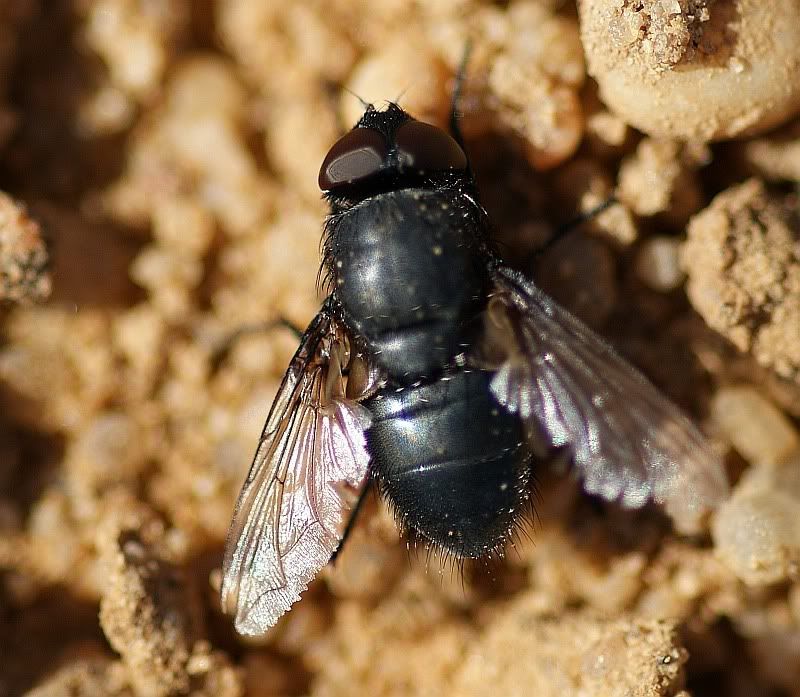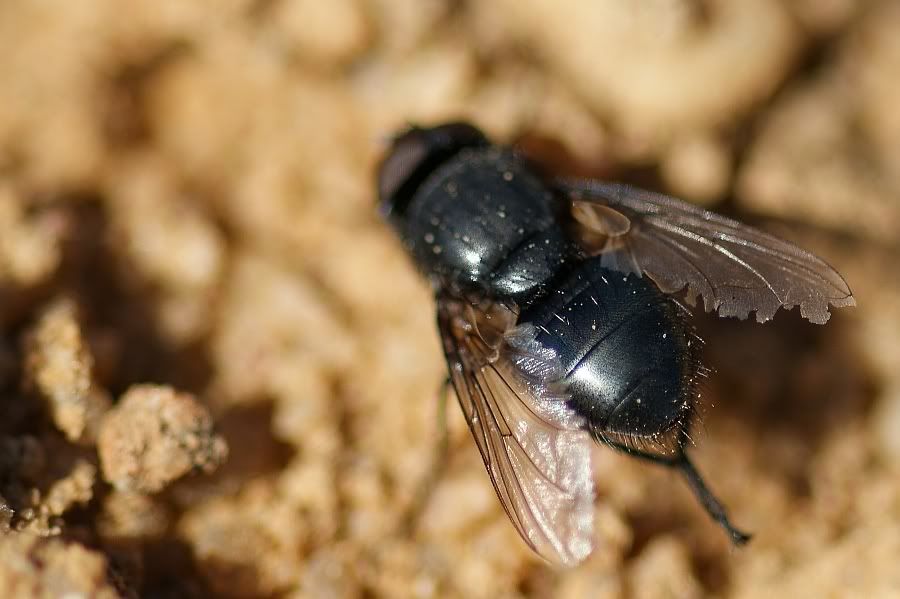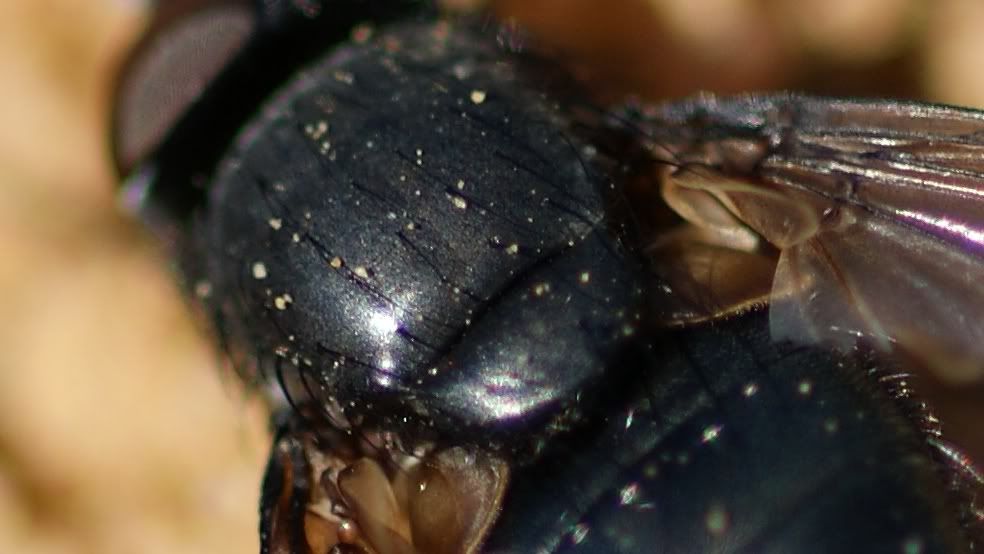Thread subject: Diptera.info :: Identified as 'Pollenia leclercqiana (male)' by Knut Rognes
Posted by valter on 02-06-2008 14:35
#1
Location: Algarve, Portugal
date Photo Taken: June 2008



Edited by valter on 06-06-2008 11:10
Posted by Xespok on 02-06-2008 16:15
#2
I think this is also Pollenia sp, but a worn specimen.
Posted by Zeegers on 05-06-2008 19:17
#3
GAbor is right
IT is Pollenia, one of the 2 black species
amentaria and atramentaria (yes, I know, don't kill the messenger)
Theo
Posted by valter on 05-06-2008 21:34
#4
Well... in Google I search for Pollenia amentaria and I found one Photo:

It Looks so different from the fly that I've photograph...
Maybe my Fly it's a Pollenia atramentaria ;)
Malcolm Storey said that:
"If it had the golden hairs on the thorax it's probably a Pollenia"
But where are the golden hairs ???
Edited by valter on 05-06-2008 23:03
Posted by Zeegers on 06-06-2008 09:03
#5
He, you make a logical error.
If golden hairs then Pollenia.
But not all Pollenia have golden hairs, Malcolm never said that !
The picture above might be amentaria, but it is very atypical, probably caused by the flash.
Theo
Posted by valter on 06-06-2008 11:12
#6
Professor dr. philos. Knut Rognes
(arbeid: Universitetet i Stavanger, Det humanistiske fakultet, Institutt
for f?rskolel?rerutdanning, N-4036 Stavanger, Norge
He said that:
Yes, Pollenia leclercqiana (Lehrer, 1978), male. I can identify it on the
dark colour, narrow frons, and stalked R5 in the wing. Known from Spain
(incl. Balearic Is) and France, pluss North Africa. First records from
Portugal. Congratulations! Good. Thanks a lot.
Posted by crex on 06-06-2008 11:38
#7
Good job, Valter ;)
Posted by Tony Irwin on 06-06-2008 19:13
#8
Valter - the golden hairs fall off (or get rubbed off) Pollenia very easily. When they are freshly emerged, all the species have golden (or silvery) wavy hairs on the thorax. As they fly around, they lose them, and in the spring after hibernation, most of them look more like yours - though usually a few hairs remain on the sides of the thorax. The species differ in the pattern of dusting on the abdomen and thorax, in the chaetotaxy (bristles) of the thorax, in the wing venation and in the proportions of the head characters. For most of us, looking at the genitalia is the easiest way to identify them with certainty. Knut Rognes is the acknowledged expert on the group, and can use his experience to name them from non-genitalia characters. (There's nothing like years of experience!;))
Posted by Zeegers on 07-06-2008 13:25
#9
Nice to have an ID by Rognes, I believe his call virtually with closed eyes (in Calliphoridae, that is).
Theo






